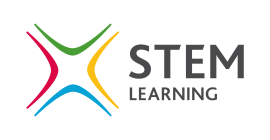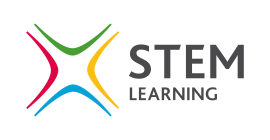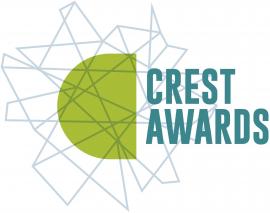Artificial intelligence (AI)
A collection of resources to explore Artificial Intelligence (AI) with students aged 7 to 19.
AI: Where is The Intelligence?
This booklet was created by the Computer Science for Fun team (Paul Curzon, Peter McOwan and Jonathon Black), for a Junior School project on artificial intelligence. Its articles include:
• The history of ‘living dolls’
• How we recognise intelligence - which animals / machines are clever?
• Multiple intelligences
• Turing tests
• Intelligent paper – following rules
• AI chess players – simulating next moves
Understanding Machine Learning and Artificial Intelligence - video collection
This collection of STEM Learning videos explores the world of artificial intelligence, machine learning and computing. Taking a deep dive into AIs place in our world and what the future might hold. AI and machine learning are useful tools, developing rapidly and are around us every day, from ChatGPT, apps on mobile phones, Deepfake, self-autonomous vehicles, image recognition, healthcare and much more. Develop your understanding of artificial intelligence and challenge commonly held viewpoints.
The collection contains content suitable for students aged 10 to 18+ and is from experts researching, developing, and working with it.
Future of flight - artificial intelligence
In this Future of Flight challenge from the Royal Academy of Engineering, which invites pupils to explore innovations within flight technology, pupils explore the questions: 'Can machines think?', 'What is intelligence?' and 'What do we mean by artificial intelligence?'
They explore where AI is used, spot patterns, continuing patterns and sequences. They will also design a smart watch that will track and monitor a pilot’s health and use bearing skills to control drone swarms.
Experience AI - Lessons
A collection of lesson plans, presentations, simulations, worksheets and hands-on projects to help introduce AI to key stage three students (aged 11 to 14), developed in partnership with the Raspberry Pi Foundation and Google DeepMind.
The six lessons are:
- What Is AI?: Learners explore the current context of artificial intelligence (AI) and how it is used in the world around them. Looking at the differences between rule-based and data-driven approaches to programming, they consider the benefits and challenges that AI could bring to society.
- How computers learn: Learners focus on the role of data-driven models in AI systems. They are introduced to machine learning and find out about three common approaches to creating ML models. Finally the learners explore classification, a specific application of ML.
- Bias in, bias out: Learners create their own machine learning model to classify images of apples and tomatoes. They discover that a limited dataset is likely to lead to a flawed ML model. Then they explore how bias can appear in a dataset, resulting in biased predictions produced by a ML model.
- Decision trees: Learners take their first in-depth look at a specific type of machine learning model: decision trees. They see how different training datasets result in the creation of different ML models, experiencing first-hand what the term 'data-driven' means.
- Solving problems with ML models: Learners are introduced to the AI project lifecycle and use it to create a machine learning model. They apply a human-focused approach to working on their project, train a ML model, and finally test their model to find out its accuracy.
- Model cards and careers: Learners finish the AI project lifecycle by creating a model card to explain their machine learning model. To finish off the unit, they explore a range of AI-related careers, hear from people working in AI research at DeepMind, and explore how they might apply AI and ML to their interests.
Artificial Intelligence resource package
The Government’s Industrial Strategy sets out key Grand Challenge themes, aimed at putting the UK at the forefront of future industry. The four Grand Challenges – Artificial Intelligence, ageing society, clean growth and future mobility – are set to transform the way we live our everyday lives.
STEM Learning has developed a suite of four resource packages, each covering one of the Grand Challenges themes. This area provides an overview of the artificial intelligence resource package.
The artificial intelligence package consists of three different activities which we can be used by students of different ages to teach artificial intelligence and machine learning. The resources draw upon computing skills such as programming and computational thinking.
Bronze award: machine learning
This CREST Bronze level resource pack focuses on Machine Learning, with a variety of project ideas enabling students to investigate machine learning in a real-life context, exploring innovative ideas and solutions for the future, such as:
- Digital technologies supporting healthcare
- Artificial Intelligence (AI) and machine learning for farming and agriculture
- Artificial Intelligence (AI) powered educational apps
- And questions such as, how can you create a trustworthy machine?
CS4FN Issue 18
This edition of Computer Science for fun asks ‘Can Machines be Creative?’ The articles inside include; The work of Ada Lovelace, Playfulness and creativity, The letter-writing algorithm that dare not speak its name, Is computer art intentional? The Painting Fool software, Computer-written stories and the sources of their inspiration, The sorcerer’s apprentice – an AI computer for making new magic tricks and AI zombie run game.
Human Enhancement
This activity, for post-16 students, run over several lessons, looks at the broader ethical and moral debates about the use of brain-computer interfaces for human enhancement. Students work in groups to carry out their own research on a chosen brain-computer interface and then present its risks and benefits to the whole class who must decide whether to approve it or not.
Unbias: fairness toolkit
The fairness toolkit has been developed to promote awareness and stimulate a discussion about how algorithms shape online experiences and to reflect on possible changes to address issues of online unfairness.
Debate kit - will the benefits of AI outweigh its risks?
Using the AI debate kit, students explore the benefits and risks that AI poses to individuals and society, now and in the future. What decisions should be made by AI? What data is needed to support these decisions? Does AI pose a threat to our own intelligence or bolster it? The different ‘rounds’ of the debate help students to think through the issues and reconsider their opinions. The structure also shows them how not build a discussion and back up their options with facts.
Machine learning: What is the effect of data size on a sorting activity?
This resource provides a set of videos and a practical investigation aimed at supporting working scientifically in the classroom and relating science to real world experiences. In the first video Professor Brian Cox joins a teacher in a classroom to demonstrate the setting up and carrying out of the experiment. In this paper-based experiment, pupils develop their own rules/algorithms for sorting sweets and aliens and look at the effect that increasing the size of the data set has on the activity. In the second video, we visit the Science Museum to discuss online content moderation using AI with Unitary, a company specialising in the use of machine learning systems to reduce the amount of online moderation done by humans. Finally, we visit Cardiff University to meet Professor Pete Burnap, to learn more about cybersecurity and the research being done into technologies used to make our public spaces safer. The second and third videos feature a focus on the skills required to work in these areas and offer young people an insight into which subjects and skills they may wish to pursue later in school and beyond. These could be a useful tool for careers teachers and form tutors.
STEM Clubs Artificial Intelligence resource
Artificial intelligence (AI) is a disruptive technology, meaning that it is significantly changing the way that people, businesses, and industry interact. To put it in context, the invention of the wheel, electricity, TV, and GPS are all disruptive technologies that changed the way in which society worked. By using this resource, students will participate in debate, discussion, plugged and unplugged activities, to gain an understanding of AI, while considering ethical and moral issues associated with its rapidly developing use. The activities develop digital and essential skills as they increase AI knowledge. Each has information links, a glossary and suggested support, challenge, and extension ideas. They are ideal for STEM clubs and support curricular and cross-curricular enrichment, by covering a broad range of subjects including, computing, mathematics, science and elements of art and design, English language, geography and PSHE.
Artificial Intelligence (AI) workshop activities
This set of resources contains two engaging unplugged workshop-style activities, designed to promote discussion and increase understanding around the theme of Artificial Intelligence (AI). The two workshop activities include an AI facial recognition activity which encourages discussion around the potential of facial recognition, by looking at the data that an AI system would collect. The Generative AI art activity guides students through step-by-step tasks to create their own unplugged ‘generative’ piece of art. Discussion tasks allow for exploration around the concept of ownership of creative works where an AI is used, reflecting on this topic of debate among content creators today.








